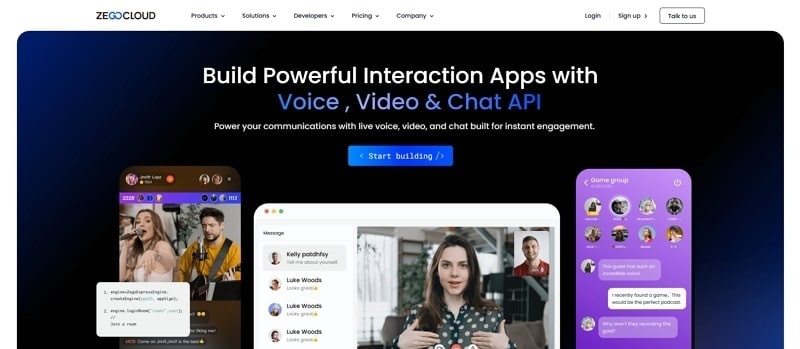The most popular open-source framework is none other than Flutter when it comes to mobile app development. The significance of mobile applications and websites has inclined everyone to learn mobile app development and web development, meanwhile considering their future career prospects. The emphasis on why everything one should know about Flutter infers upon its worthiness.
What is Flutter?
Flutter is an open-source UI software development toolkit created by Google. It allows developers to build natively compiled applications for mobile (iOS and Android), web, desktop, and even embedded devices — all from a single codebase.
The Advantages and Disadvantages of Flutter
Flutter is an easily accessible and free open-source framework. It provides a variety of advantages to the developers, but it has certain disadvantages as well, up to some extent.
Advantages of Flutter
- Fast Development:
Flutter allows for quick development through its Hot Reload feature, enabling developers to instantly see changes in the app without restarting it. This significantly speeds up the development process. - Single Codebase:
With Flutter, developers can write a single codebase for both iOS and Android platforms. This reduces development time and cost since there’s no need for separate code for each platform. - Great Performance:
Flutter apps are compiled directly into native ARM code, which results in fast performance. It avoids performance issues common with other cross-platform frameworks. - Rich Widget Library:
Flutter comes with a rich set of pre-designed widgets that follow Material Design for Android and Cupertino for iOS. This allows for highly customizable UI components. - Strong Community & Ecosystem:
Flutter is backed by Google and has a growing and active developer community. There are plenty of resources, tutorials, and libraries available, making it easier to find solutions to common problems. - Consistency Across Platforms:
Since Flutter allows developers to control every pixel of the screen, it ensures a consistent UI/UX across both iOS and Android platforms. - Good for Prototyping:
Flutter is an excellent tool for quickly building and testing prototypes, as it allows for rapid iteration and visual updates without long compilation times. - Open Source:
Flutter is free and open-source, which means developers can access the source code, contribute to it, and use it without any licensing fees.
Disadvantages of Flutter
- Limited Libraries and Plugins:
Although Flutter’s library ecosystem is growing, it still lacks some platform-specific libraries and plugins that are available for native development, especially for more complex features. - Larger App Size:
Flutter apps tend to be larger in size compared to native apps. This can be a concern for users with limited storage or on mobile devices where app size impacts performance. - Relatively New:
Flutter is relatively new compared to frameworks like React Native or Swift/Java. As a result, some developers might face challenges when it comes to troubleshooting rare issues or finding mature solutions. - UI Consistency on Older Devices:
While Flutter provides a consistent UI on most devices, it can sometimes be tricky to achieve the same smooth performance and look on older or low-end devices. - Limited Native API Access:
While Flutter allows you to access many native APIs through platform channels, some advanced native features might be harder to implement, requiring native code (Java, Swift, etc.), which can lead to more complexity. - Learning Curve for Developers:
Developers familiar with other frameworks like React Native or native development may face a slight learning curve to get used to Flutter’s Dart programming language and its unique way of building apps. - Limited Support for Web and Desktop:
Although Flutter is expanding into web and desktop applications, it is still not as mature or fully supported as it is for mobile development. - Long Compilation Times for Initial Builds:
While Hot Reload is fast, the initial build time for large apps can still be slow compared to other frameworks like React Native.
What Programming Language Does Flutter Use?
Flutter is an open – source UI toolkit developed by Google and is widely used for building high – performance cross – platform applications. It uses the Dart programming language, which is designed specifically for client – side development and has advantages such as fast startup, hot reload, and a powerful type system.
When choosing Flutter to develop mobile apps, you can not only deploy them to both iOS and Android platforms simultaneously but also significantly improve development efficiency and application performance by leveraging Dart’s concise syntax and efficient execution. For enterprises and developers who hope to save development costs and speed up product launch, Flutter is undoubtedly a solution worth considering.
How Can Flutter Help App Development
Flutter helps app development in several powerful ways that make it a favorite among developers and businesses alike. Here’s how:
1. Cross-Platform Development
Flutter allows you to write one codebase and run it on iOS, Android, web, desktop (Windows, macOS, Linux)—saving time, effort, and costs.
2. Fast Development with Hot Reload
With Hot Reload, you can instantly see code changes reflected in the app without restarting it. This speeds up UI tweaking, bug fixing, and experimentation.
3. Beautiful, Customizable UI
Flutter uses its own rendering engine and widget system, so you can:
- Create highly customized UI components.
- Mimic native designs (Material Design for Android, Cupertino for iOS) easily.
- Build unique branded experiences from scratch.
4. Great Performance
Flutter apps are compiled to native ARM code, leading to smooth animations and fast startup times—close to native performance.
5. Rich Set of Widgets
Flutter comes with a massive collection of pre-built widgets for layout, navigation, animation, gestures, and more—reducing the need to write boilerplate code.
6. Strong Community and Support
A large, active community and support from Google mean:
- Lots of packages and plugins available.
- Ongoing updates and improvements.
- Solid documentation and learning resources.
7. Same UI Across Platforms
Flutter ensures consistent UI and behavior across different platforms, unlike other frameworks that rely on native components, which might behave differently.
How Does ZEGOCLOUD Support Flutter?
ZEGOCLOUD offers comprehensive support for Flutter developers, enabling the integration of real-time audio, video, and live streaming functionalities into Flutter applications. Their solutions are designed to accelerate development, enhance user engagement, and provide scalable communication features across platforms.

How ZEGOCLOUD Supports Flutter Development
- Prebuilt UIKits for Rapid Integration
ZEGOCLOUD provides prebuilt UIKits, such as thezego_uikit_prebuilt_callpackage, which allows developers to implement one-on-one and group voice/video calls with minimal coding. These UIKits include essential features like online/offline invitations and customizable UI components, streamlining the development process. - Comprehensive SDKs for Customization
For developers seeking more control, ZEGOCLOUD offers the ZEGO Express SDK, a robust toolkit that supports live video and real-time audio/video services. This SDK is compatible with Flutter and facilitates the creation of customized communication applications. - Extensive Documentation and Tutorials
ZEGOCLOUD provides detailed documentation and tutorials, such as the guide on building a Flutter video call app, to assist developers in integrating their SDKs effectively. These resources cover various aspects, including project setup, UI customization, and advanced features like screen sharing and group calls. - Cross-Platform Compatibility
Leveraging Flutter’s cross-platform capabilities, ZEGOCLOUD ensures that applications built with their SDKs function seamlessly on both iOS and Android devices, maintaining consistent performance and user experience across platforms. - Scalability and Real-Time Performance
ZEGOCLOUD’s infrastructure supports scalable solutions, accommodating a range of applications from small-scale projects to large enterprise-level deployments. Their real-time network ensures low-latency communication, crucial for applications requiring live interactions.
Conclusion
If you are a Flutter developer, ZEGOCLOUD will be the best API/SDK provider you should know. Just Sign up for 10,000 free minutes to start your app-building now.
Let’s Build APP Together
Start building with real-time video, voice & chat SDK for apps today!










